TL;DR
Startups should plan to invest about 15–20% of their annual revenue on marketing, balancing immediate lead-gen channels like PPC and social ads with mid-term tactics such as email and organic social, and long-term investments in SEO, content, and brand building. By focusing on 2–4 channels at a time, testing performance, and ensuring solid product-market fit and a clear go-to-market strategy, founders can optimize ROI and scale marketing spend effectively.
Launching a SaaS startup is often chaotic, especially for the founder.

(This is supposedly a stressed founder in the astral plane)
Different roles need to be filled, while resources are tight, often causing the founder to wear many hats in the early stages.
Then, on top of it all, you have to consider marketing (and sales), which is likely the most involved but important part of gaining momentum for your business and scaling up to the next stage.

While marketing can be a pain in the ass (I’m saying this as a marketer myself), especially as a startup founder who doesn’t have any marketing experience, I’m hoping to make your life slightly more manageable by giving you a few options for allocating your marketing budget, and a few other things to keep in mind before your start your marketing initiatives for your brand and product.
Specifically, this article will help you determine how much of your budget you should allocate to your startup's marketing efforts and how to use this budget to get the most ROI from your marketing spending, especially in the beginning when your cash flow and funds are limited.
Whatever stage of growth you’re at, this article will help you understand how to set the proper budget for your startup's marketing efforts and where to allocate that budget.
How Much Should a Startup Spend on Marketing?
For a startup just starting with marketing, you should expect to spend around 15-20% of your annual revenue on marketing.
Revenue ($)
Marketing Spending at 15% ($)
Marketing Spending at 20% ($)
50,000
7,500
10,000
100,000
15,000
20,000
500,000
75,000
100,000
Typically, startups start from 0 with brand awareness, so you’ll have to be slightly more aggressive with your marketing initiatives in the early stages.
Just aggressive enough to build momentum for your product and brand.
You have your great product idea, a product-market fit, and at least a minimum viable product, but no one has yet heard of your product.
Established SaaS companies already have a known brand, a developed pipeline, and all of their marketing channels, so they don’t have to be as aggressively growth-focused as an early-stage startup.
Even as a growth-stage startup, that’s when you’ll want to put the pedal to the metal with your marketing spend and capture that growing momentum.
While larger B2B SaaS companies might have higher average marketing budgets, it’s typically a smaller percentage of their annual revenue.

Larger, more established B2B tech companies will generally spend only about 10-15% of their annual revenue on marketing activities and are typically more flexible with their marketing channels.
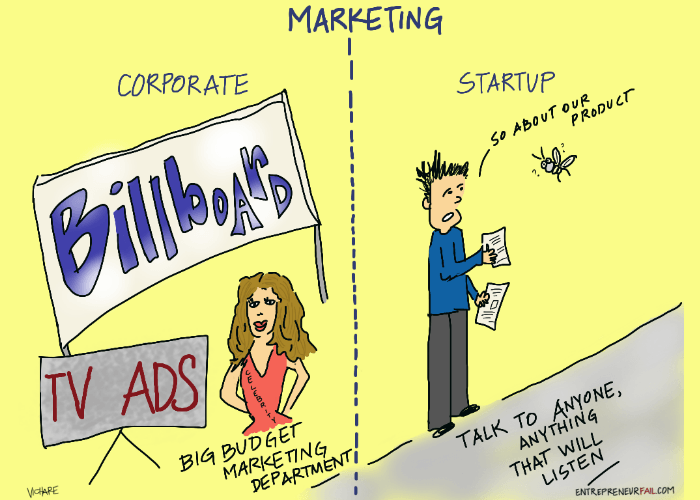
Source: Inc42
Unfortunately, if you’re in that seed to early stage, you won’t have the luxury of being conservative with your marketing budget.
And to top it off, your startup will likely use an entirely different set of marketing tactics compared to larger SaaS brands.
While larger B2B SaaS companies have the resources to spend on demand generation and brand awareness tactics, your startup should be focused on lead generation and client acquisition until you reach the point where you have a solid user base and pipeline.
You’ll also have to decide your marketing budget allocation.
You’ll have to consider:
- If more budget should go towards your marketing or sales team
- If you should spend more on ads or SEO
- How many marketing tools you can purchase
- How much you’ll need to allocate for market research
Assuming you’ve already determined your product-market fit and go-to-market strategy, these marketing costs will all come after that.
If you haven’t planned your GTM strategy or product-market fit, you’ll need to plan this out before you execute any marketing tactics.
Any marketing before these will be like building your house on a faulty foundation.

It’s bound to be a waste of marketing dollars.
Marketing Costs You’ll Need to Consider as a Startup
For the actual cost of a startup marketing budget, remember that different variables will affect your overall budget.
So it's not just your marketing spend, but everything that falls under cost of goods sold.
So you'll want to account for other marketing expenses like:
- Marketing Technology Costs: Expenses for digital marketing tools (like CRM systems, email marketing platforms, analytics tools, content management systems), subscription or licensing fees for software services, integration costs for different marketing technologies, and training expenses for staff.
- Operational Technology Costs (project management): Costs for project management software and tools, subscription fees for these platforms, and potential training costs for team members.
- Market Research Costs: Expenditures for conducting primary research (surveys, focus groups), accessing secondary research databases, and hiring market research firms or consultants.
- Marketing Automation Software Costs: Subscription or purchase costs for marketing automation platforms, costs for integrating with other tools, and training expenses for using these systems.
- Paid Advertising Costs: Budgets for online advertising (Google Ads, social media ads), costs for ad design and production, and fees for advertising agencies or consultants.
- Sales Costs (Sales Expenses and Sales Representatives): Salaries or commissions for sales staff, expenses for sales tools and software, training costs for sales techniques, and travel and entertainment expenses related to sales activities.
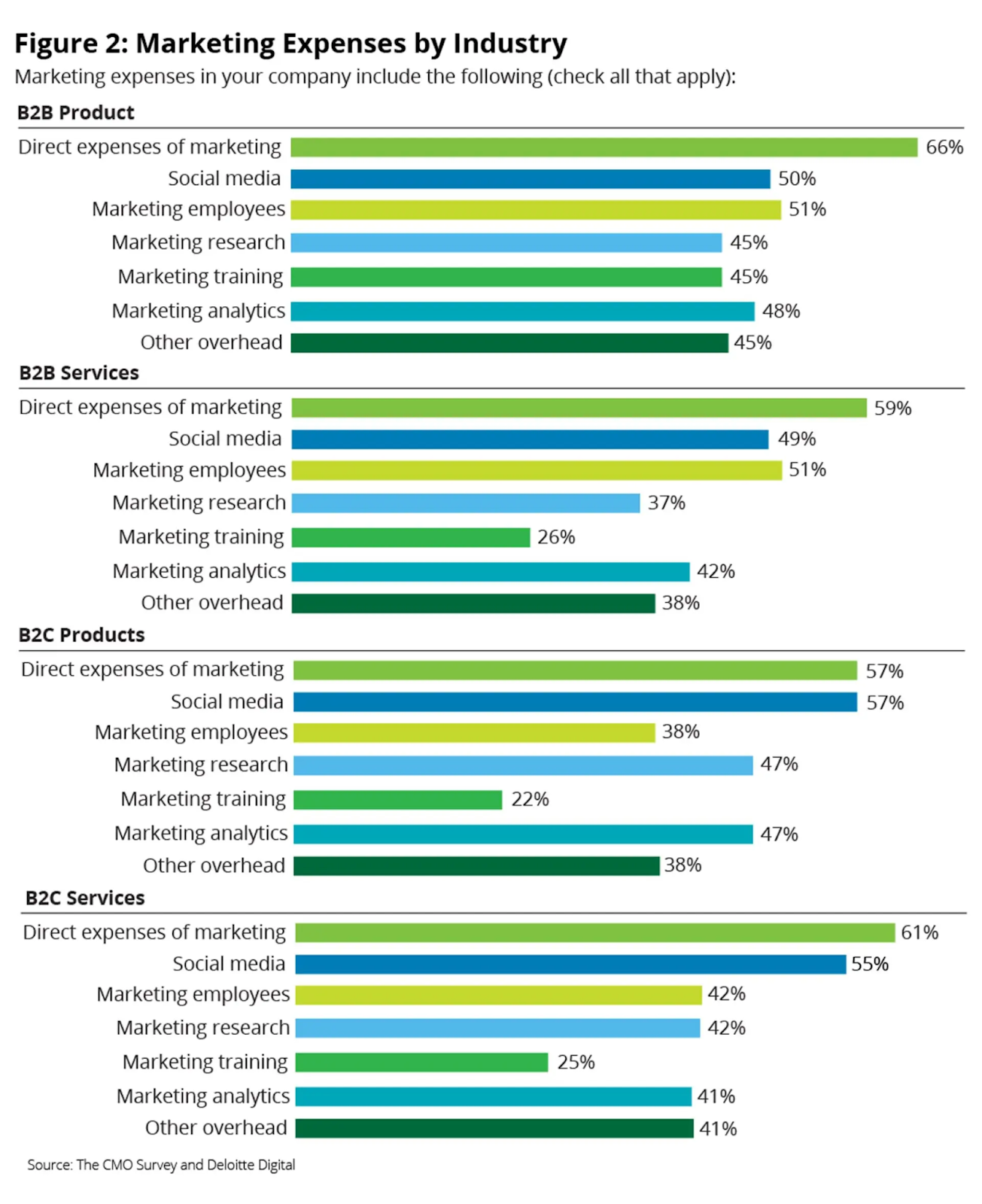
Source: Third Angle
While early-stage startups should be aggressive with their marketing initially, you shouldn’t try to implement every marketing tactic at once, especially if you don’t have an established marketing team.
While you may have a growth-at-all-costs mindset, your marketing effectiveness suffers when you spread yourself too thin.
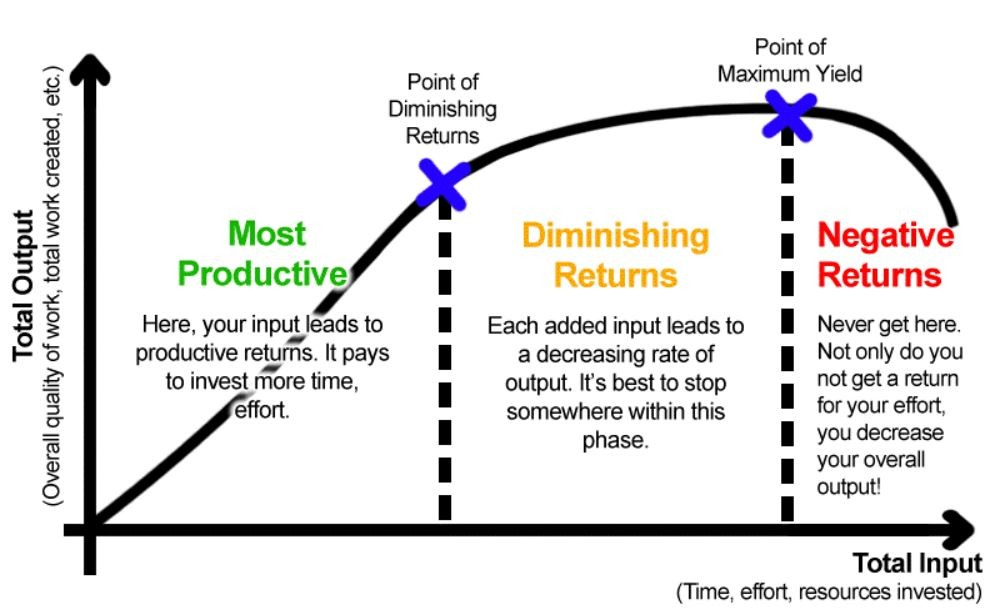
The more marketing channels you use, the more you’ll have to juggle.
So, you’ll have to decide whether you want to:
- Scale up by hiring a marketing team
- Outsourcing to a marketing agency/consultant
- Managing marketing yourself
While there is no wrong or right answer here, it depends on:
- Your capacity,
- Marketing budget
- Marketing funds available
- Growth goals
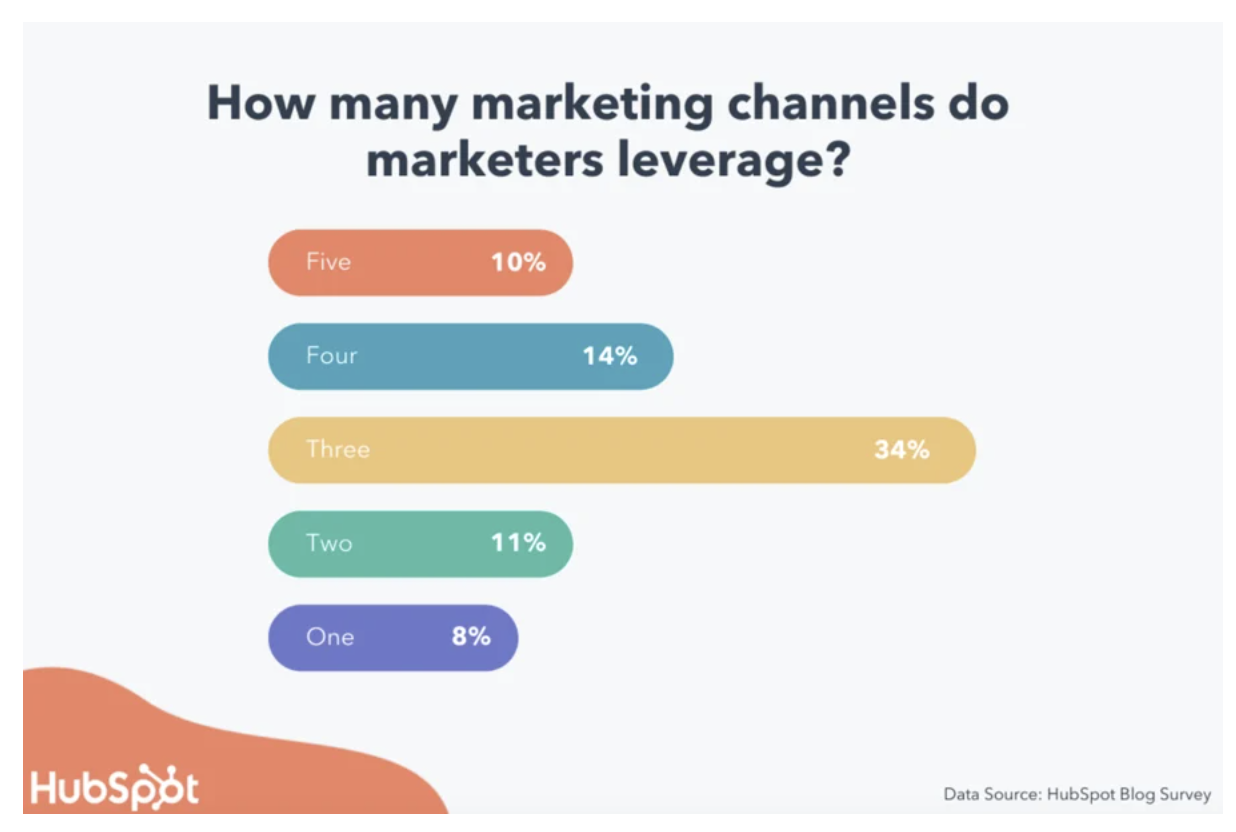
Source: Hubspot
Stick with 2-4 marketing channels per quarter to avoid burning yourself out.
You can test around with these marketing channels, too.

Once a quarter, you could A/B test each of your marketing tactics.
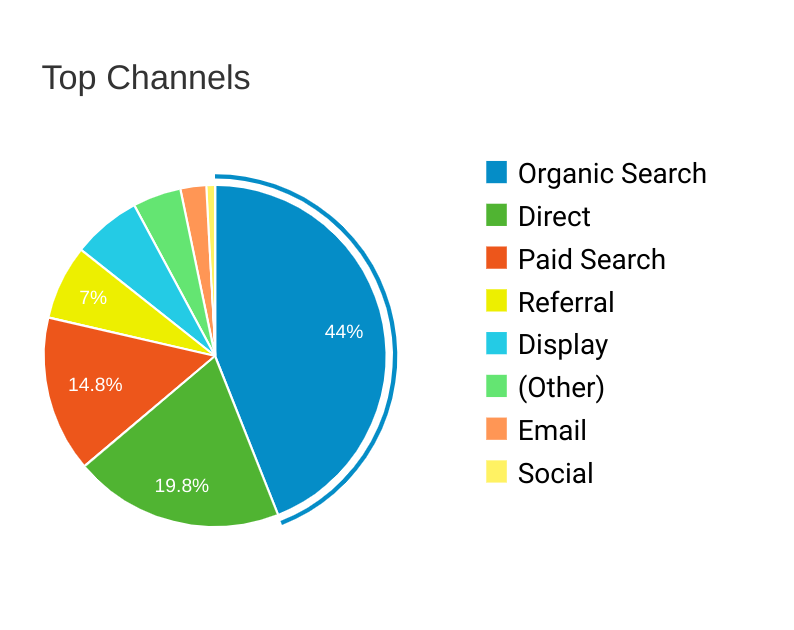
You can keep the marketing channels consistently performing well and swap around those not performing well.
So double down on what’s effective, and use the other channels to test what could also be effective for you.
Keep in mind that these 3-4 marketing channels should be split between 3 types:
- A long-term channel (SEO, ABM, Content Marketing, Brand Building)
- A mid-term channel (Social Media Marketing, Email Marketing)
- A short-term channel (Social Media Ads, Pay Per Click Advertising, Retargeting ads, Affiliate Programs)
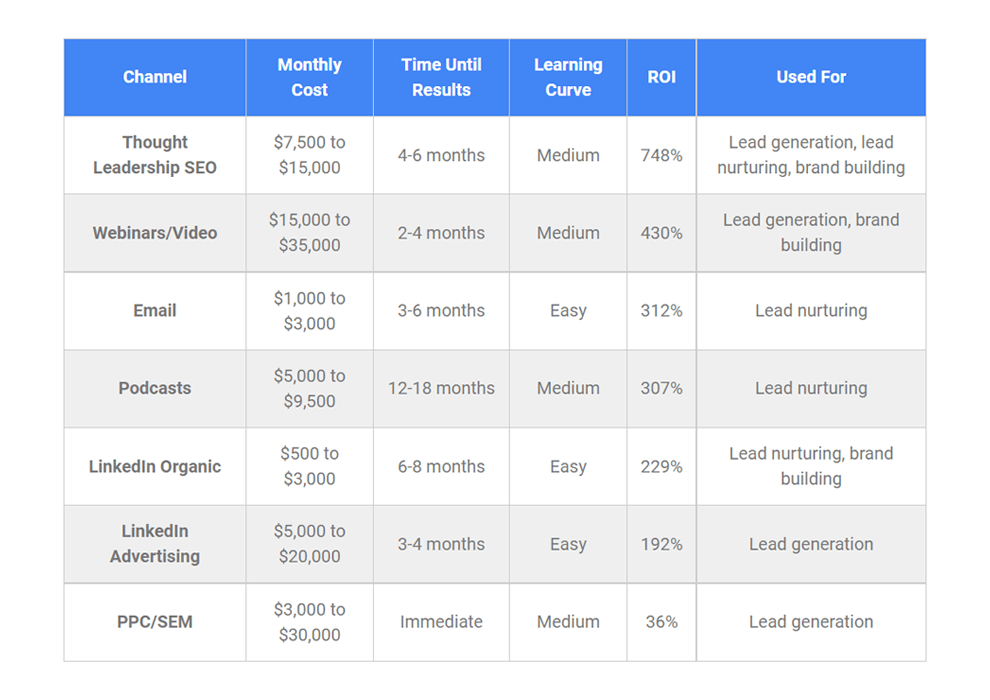
Your short-term channel should be something that can bring leads in immediately; think PPC or social ads.
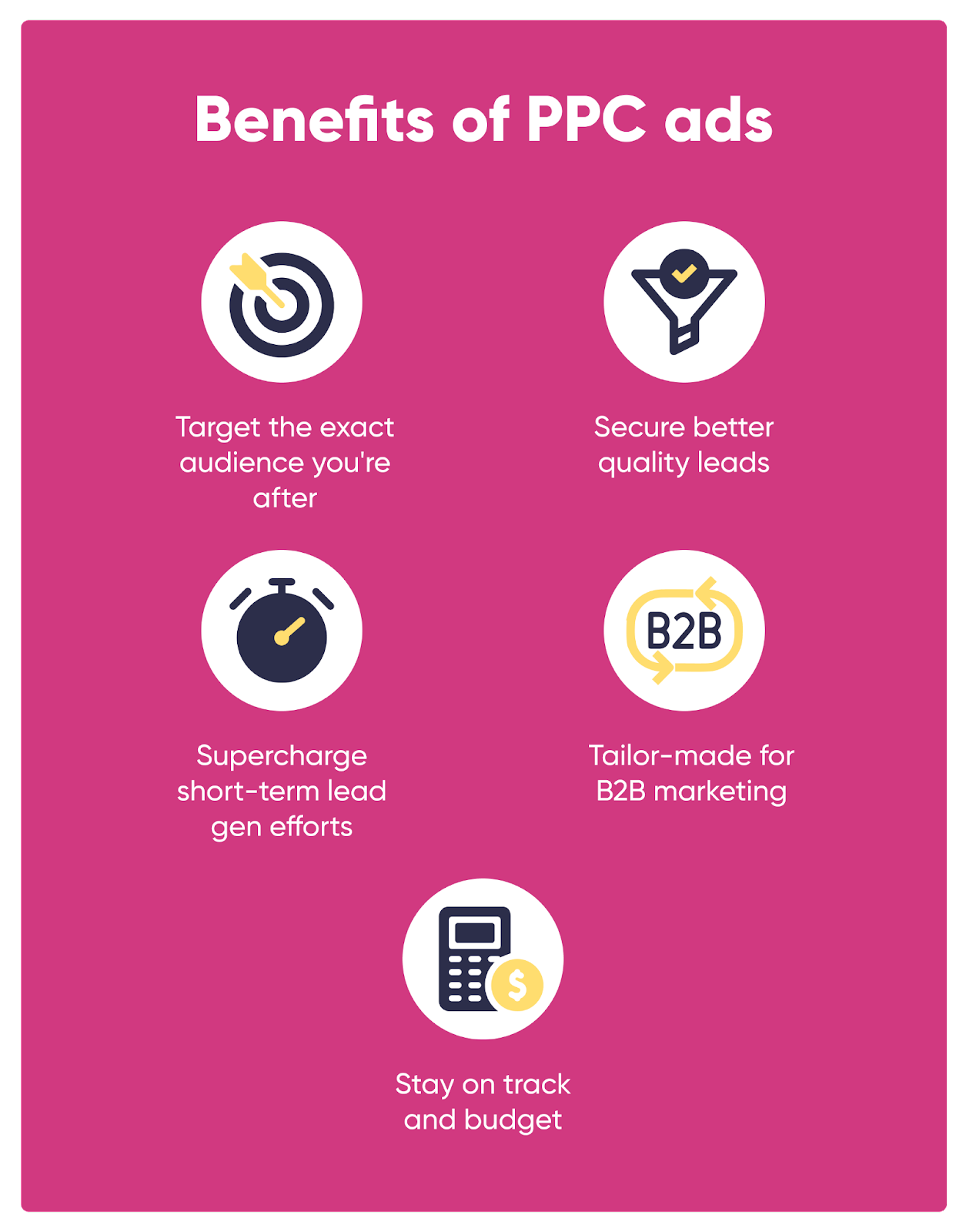
Source: Marquiz
Your mid-length channel will require more effort but should be expected to drive leads in around 1-3 months; think organic social or email marketing.
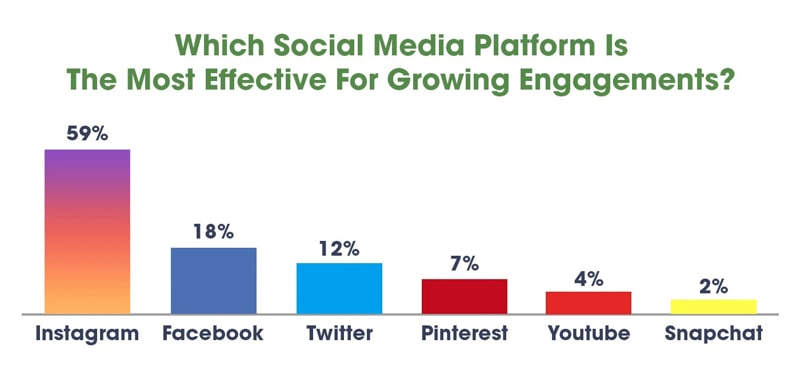
Source: Renderforest
Finally, we have our long-term channels.
These will be channels you can expect to spend around 3-12 months working on:
- Organic Search
- Content Marketing
- Brand Building
- Account-Based Marketing
And if you’re a startup, chances are you’re starting with a new website, too.
You can expect 3-6 months to see results with SEO, with 3 months pretty much being the absolute minimum.
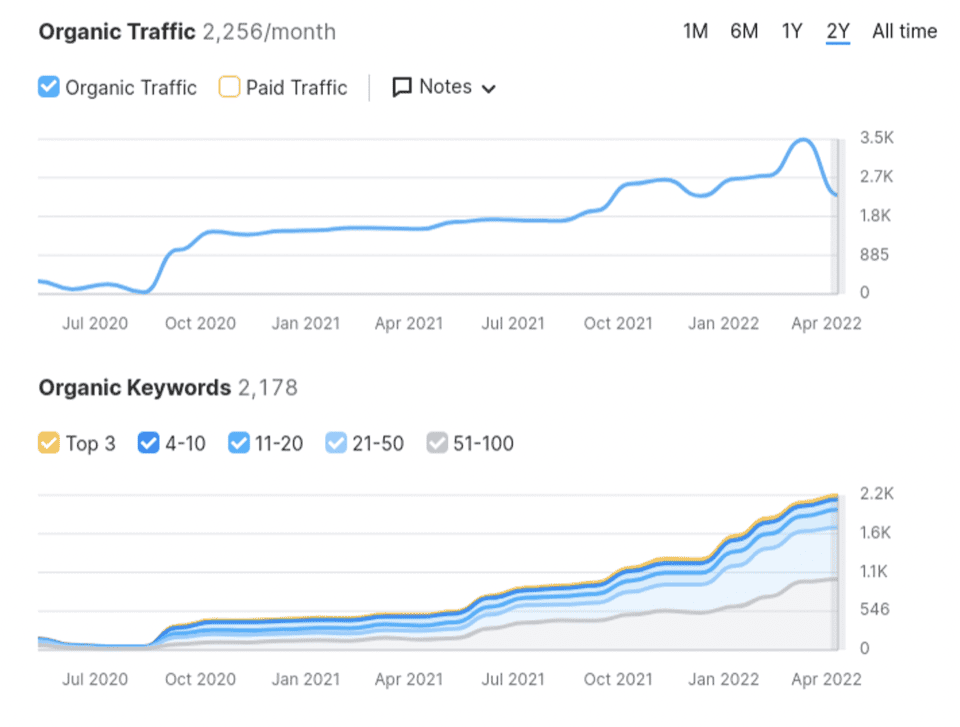
With SEO, this is why you’ll want to prioritize other marketing channels, so you aren’t sitting high and dry waiting for your organic traffic to deliver leads for you.
Just keep in mind that SEO isn’t something that you can pause each month like PPC.
SEO is something that needs to compound over time. So, the more you invest in it, the more you’ll get out, and the faster the results will come.
Just imagine a snowball rolling down a hill, getting larger and larger the further it rolls.

As long as you have other channels that can drive more immediate leads, it won’t matter how long it takes your SEO to kick in.
Things to Consider Before You Set Your Startup Marketing Budget
Before you create your initial startup marketing budget, figure out what your overall marketing initiatives will be focused on.
What do you hope to get out of your marketing?
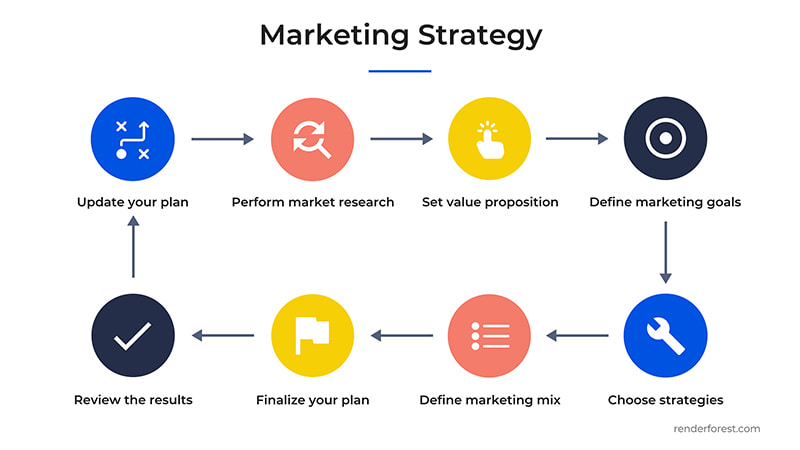
Source: Renderforest
Once you have a marketing strategy set, this should give you a better idea of how targeted your marketing should be and what channels would work best for you.
For B2B startups, it could be:
- Getting ideal customers to convert at a much lower acquisition cost
- Building awareness for your brand and product
- Increasing your customer lifetime value by retaining existing users
- Getting your existing users to spread word of mouth about your product
In the case of an early-stage SaaS startup, chances are you care more about initial product users than brand awareness.
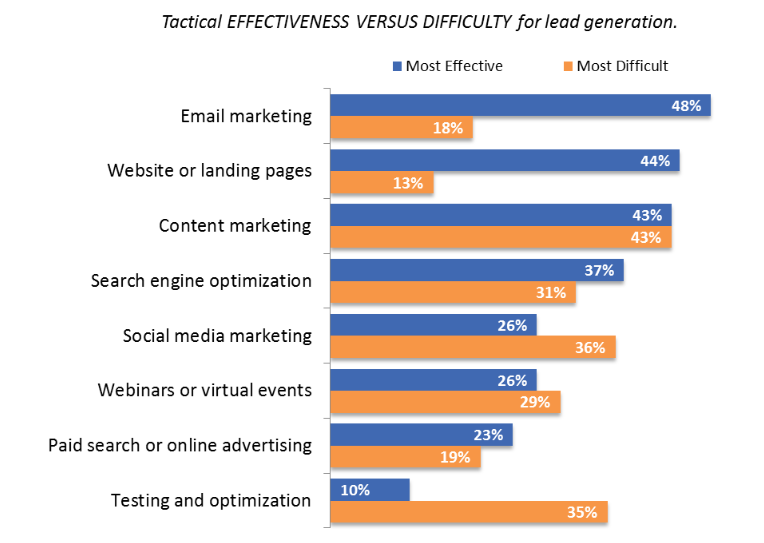
Source: Mike Khorev
Once you have more of a customer base, you can move up the funnel to target more awareness-level tactics.
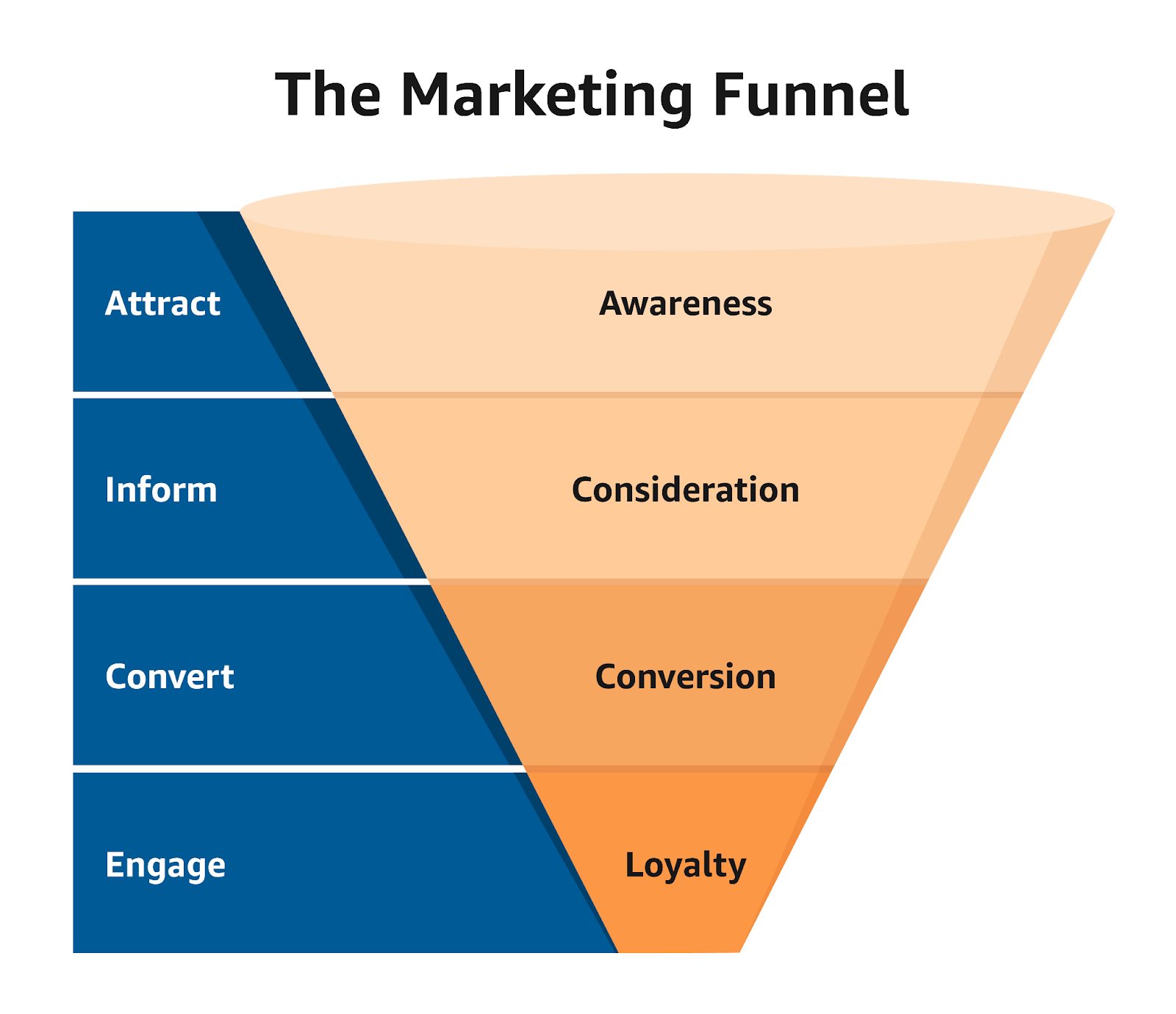
Source: Amazon Ads
If you focus on lead acquisition (the convert stage), you can build an established user base with the flexibility to move up the funnel and target more consideration/awareness tactics.
Also, make sure you have the right product-market fit.
While you can market your product while it’s in its minimum viable product stage, your marketing efforts will see a stronger ROI if the product is ready for them to sign up for.
If you don’t have an MVP yet, you’ll have to start your marketing efforts with brand awareness. While focusing primarily on brand awareness with an MVP isn’t bad, it will be costly for you without the client acquisition to fund your efforts.
You can get people to sign up for a waitlist, but again, it will be expensive until you can start bringing in recurring revenue.
Focus on product development first and then move to marketing once you have the right product-market fit and go-to-market strategy.
Tips for Setting the Right Startup Marketing Budget
As mentioned, 15-20% of total revenue will be the ideal starting range for your startup’s marketing budget.
Where this budget goes will depend mostly on your marketing goals.
There will be plenty of variables that will affect how much you’ll want to spend on marketing:
- Ad spend
- Tools
- Overhead
- Employees
Chances are, you’re already wearing enough hats as it is as a pre-seed, seed, or early-stage founder, so your time will best be spent by outsourcing your marketing or hiring internally.

Focus on What You’re Spending For Each Marketing Channel
Most marketing channels shouldn’t waste too much of your budget. However, a few channels can destroy your marketing funds if left unchecked.
These will mostly be your outbound channels like Google Ads and paid social.

Source: Search Scientists
If you’re doing any kind of paid advertising, it can be very easy to overspend your marketing funds.
If you’re not properly managing your budget for paid advertising, especially Google Ads, you can easily spend thousands without getting anything in return.

Common reasons for this are:
- Lack of Clear Goals: Not having specific, measurable objectives for the campaign.
- Poor Keyword Selection: Targeting broad, irrelevant, or highly competitive keywords.
- Inadequate Bid Management: Failing to adjust bids based on performance and market conditions.
- Neglecting Negative Keywords: Not using negative keywords to exclude irrelevant traffic.
- Ignoring Match Types: Misusing broad, phrase, and exact match types in keyword targeting.
- Overlooking Ad Scheduling: Running ads 24/7 without considering peak performance times.
- Frequent Campaign Changes: Too many changes too quickly can disrupt data collection.
- Lack of Testing: Not testing different ad elements (e.g., headlines, descriptions) for optimization.
- Ignoring Conversion Tracking: Not tracking or incorrectly setting up conversion tracking.
- Failing to Analyze Data: Not reviewing or understanding campaign analytics to make informed adjustments.
Whatever it is, make sure you’re familiar with paid platforms before investing in them.
Even if paid advertising is a successful channel, you’ll also want to consider your customer acquisition cost.
Your CAC will tell you how much it costs to acquire each customer from your marketing channels.
You can then use your CAC to find the channels driving the best leads from your target audience at the lowest acquisition cost.
SEO and email marketing will be those channels.
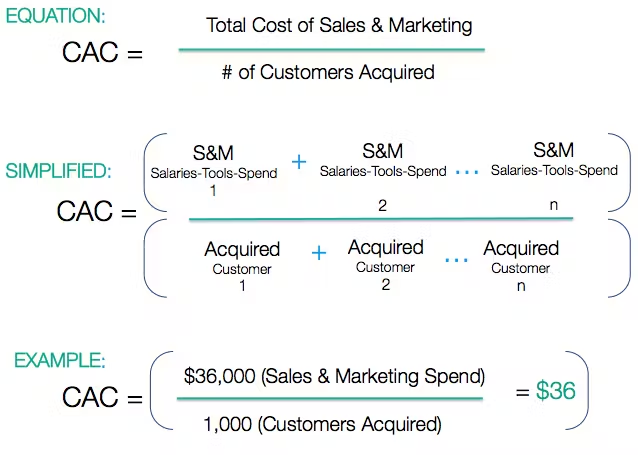
Source: Paddle
While PPC might work well with bringing in potential customers, it will also be the marketing channel with the highest CAC.
It should be seen as a temporary solution while priming up your lengthier channels.
How to Calculate Your Ideal Startup Marketing Budget
Unfortunately, figuring out your perfect startup marketing balance will mostly come down to trial and error.
If you’re looking to delegate your 15-20% marketing budget spend, test your marketing channels, find the ones that work best for you, and double down on your performing channels while testing around with your underperforming channels.
Revenue ($)
Social Media Marketing ($)
PPC (Pay-Per-Click) ($)
SEO (Search Engine Optimization) ($)
50,000
10,000
25,000
15,000
100,000
20,000
50,000
30,000
500,000
100,000
250,000
150,000
1,000,000
200,000
500,000
300,000
5,000,000
1,000,000
2,500,000
1,500,000
With SEO, you’ll unfortunately have to invest blindly before knowing if it’s a successful channel.
How much you invest in SEO will depend on your revenue and available funds.
Still, invest in SEO, as it can be a strong performer for your startup, especially when delivering leads at a much lower acquisition cost.
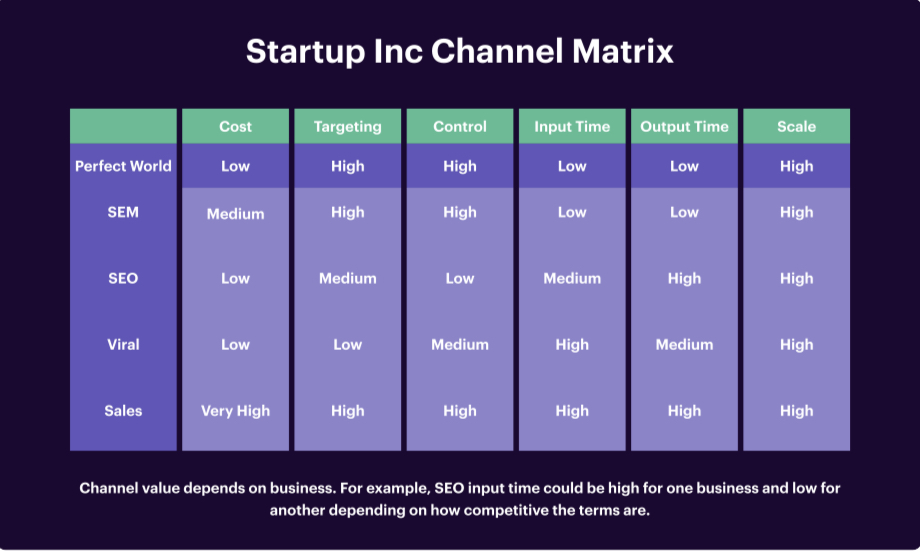
Source: Segment
Eventually, SEO will get to the point where you don’t even have to put as much effort into it to see results, but you do have to take a bit of a blind leap of faith to get there.
There are some ways to gauge your SEO campaign along the way, like growing impressions or keywords, but in the beginning, you have to be ready to commit to 3 months before seeing results.
As long as you’re seeing some growth, that's probably the only marketing channel to leave as a constant.
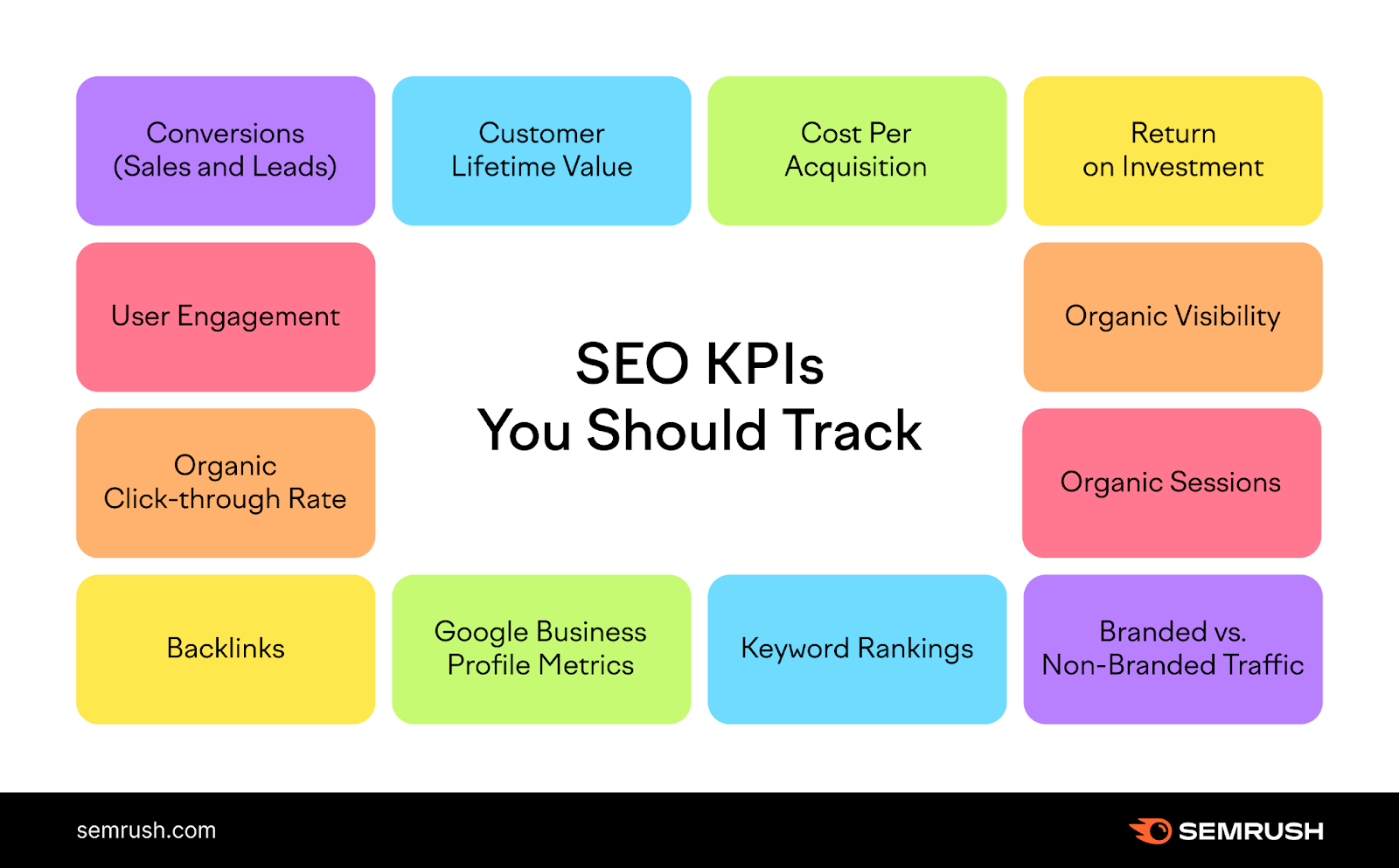
Source: SEMrush.
Be as flexible as you can with your marketing budget. Play around with your marketing campaigns at first, and give it a few months to see which channels work best for you.
Then, whatever works best will be the channel you’ll want to double down the most on.
And make sure you don’t end up like this:



.png)

